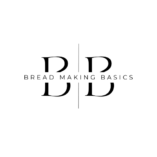This site may contain affiliate links to products. We may receive a commission for purchases made through these links.
Remember, bowls are more than just vessels for dough; they contribute to the overall success and quality of your bread-making process. Choosing the right bowls and using them appropriately will help you achieve beautifully risen loaves with great flavor and texture. Here’s what you should know about bowls and their significance in bread making:
Mixing Bowls: A mixing bowl is used to combine ingredients and create the bread dough. Choose a bowl that is large enough to accommodate the volume of dough you’ll be working with. Opt for a bowl with high sides to prevent the dough from spilling over during mixing. Use non-reactive bowls, such as stainless steel, glass, or food-grade plastic, to avoid any unwanted reactions with ingredients like acidic dough or sourdough starter.
Fermentation Bowls: After the initial mixing, the dough is placed in a fermentation bowl for bulk fermentation. This bowl allows the dough to rise and develop flavor. Many may ask “What kind of bowl is best to allow for bread to rise?”. I will often use the same bowl as my mixing bowl for this step. You will want to use a bowl with ample space to accommodate the dough’s expansion during fermentation. It is important to cover this bowl with a lid or plastic to prevent air escape in the fermentation process. A clear or translucent bowl can help you monitor the dough’s progress. .
Proofing Baskets: A proofing basket, also known as a banneton, is used to shape and support the dough during its final rise, known as proofing. These baskets are usually made from natural materials like cane or rattan, which provide support and create a beautiful pattern on the crust. They come in various sizes and shapes, allowing you to shape your bread into boules, batards, or baguettes. Lightly flour the proofing basket to prevent the dough from sticking during proofing.
